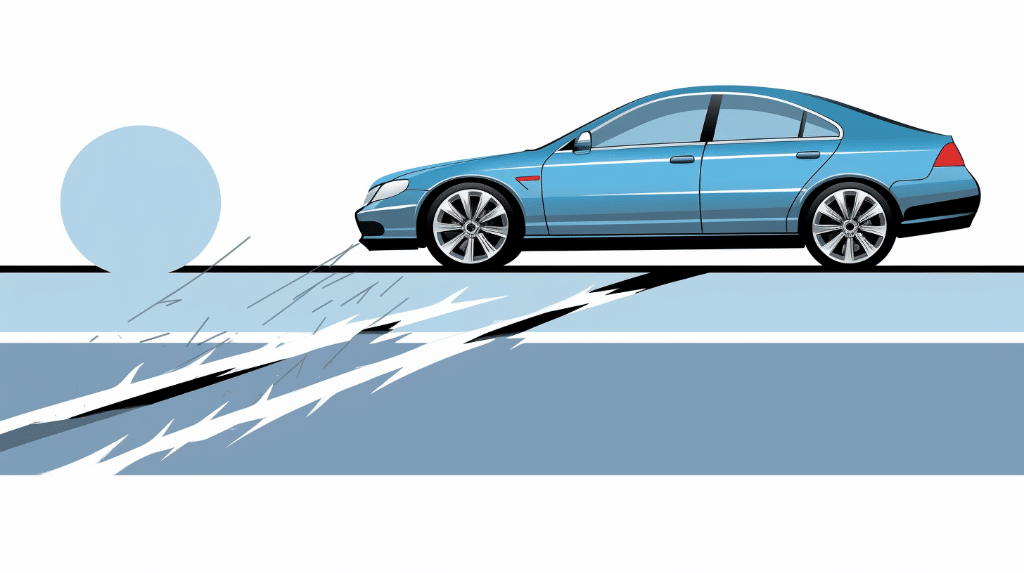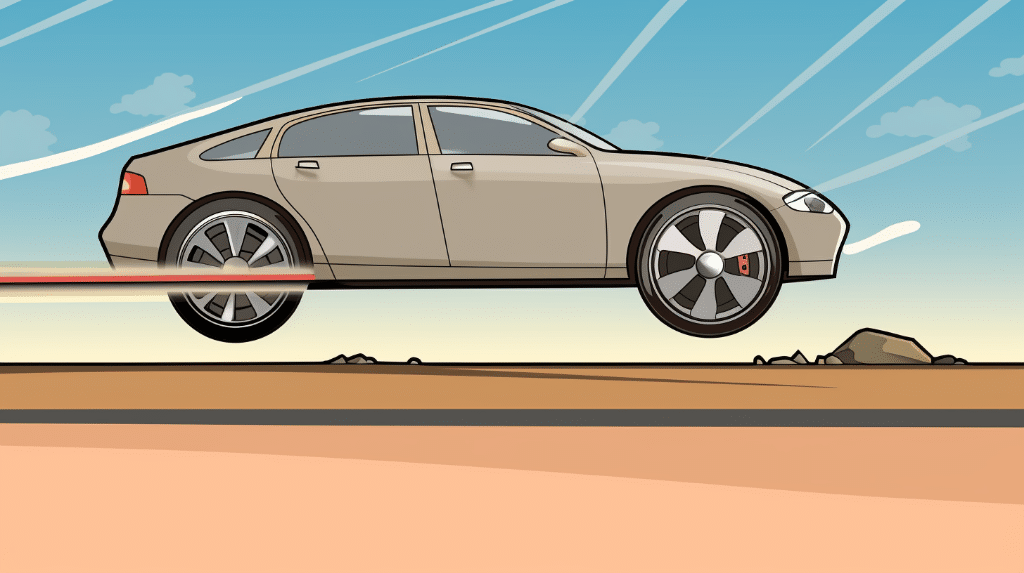Acceleration is a fundamental concept in physics that measures the change in velocity over time. When dealing with objects in motion, it is essential to consider external factors such as friction. Friction is a force that opposes the motion of an object and can significantly impact its acceleration. In this blog post, we will explore how to find acceleration with friction. We will discuss various scenarios and provide formulas and examples to help you understand the calculations involved.
How to Calculate Acceleration with Friction Coefficient and Mass
Explanation of Friction Coefficient and Mass
Friction coefficient, often represented as “μ” (mu), is a value that quantifies the level of friction between two surfaces in contact. It depends on the nature of the surfaces and is dimensionless. The coefficient of friction can take on different values depending on whether the surfaces are at rest or in motion relative to each other.
Mass, on the other hand, refers to the amount of matter an object contains. It is a scalar quantity and is often denoted by “m.” Mass is measured in kilograms (kg) and plays a crucial role in determining the acceleration of an object.
Formula for Calculating Acceleration with Friction Coefficient and Mass
To calculate the acceleration of an object considering friction, we can use the following formula:
![]()
Where:
– ![]() represents the acceleration of the object
represents the acceleration of the object
– ![]() is the net force acting on the object
is the net force acting on the object
– ![]() is the mass of the object
is the mass of the object
Worked Out Example
Let’s consider an example to illustrate how to calculate acceleration with friction coefficient and mass.
Suppose we have a box with a mass of 5 kg. The coefficient of friction between the box and the surface it’s on is 0.2. If a net force of 30 N is applied to the box, what will be its acceleration?
First, we need to calculate the frictional force using the formula:
![]()
Here, ![]() represents the normal force acting on the box. In this case,
represents the normal force acting on the box. In this case, ![]() is equal to the weight of the box, which is given by:
is equal to the weight of the box, which is given by:
![]()
Where ![]() is the acceleration due to gravity (approximately 9.8 m/s²).
is the acceleration due to gravity (approximately 9.8 m/s²).
Substituting the values into the formulas, we can calculate the frictional force:
![]()
![]()
Now, let’s find the net force acting on the box:
![]()
Finally, we can calculate the acceleration using the formula:
![]()
Therefore, the box will accelerate at a rate of 4.04 m/s² when a net force of 30 N is applied, considering the friction coefficient and mass.
How to Determine Acceleration with Friction and Applied Force

Explanation of Applied Force
The applied force refers to an external force acting on an object, causing it to accelerate. It can be exerted by pushing, pulling, or any other means. When calculating acceleration with friction and applied force, we need to consider both forces and their effects on the object’s motion.
Formula for Calculating Acceleration with Applied Force and Friction

To determine the acceleration of an object considering both the applied force and friction, we can use the following formula:
![]()
Where:
– ![]() represents the acceleration of the object
represents the acceleration of the object
– ![]() is the force applied to the object
is the force applied to the object
– ![]() is the frictional force acting on the object
is the frictional force acting on the object
– ![]() is the mass of the object
is the mass of the object
Worked Out Example
Let’s consider another example to demonstrate how to determine acceleration with friction and applied force.
Suppose a 10 kg object is subjected to an applied force of 50 N. The frictional force acting on the object is 20 N. What will be the object’s acceleration?
Using the formula mentioned earlier, we can calculate the acceleration:
![]()
Therefore, the object will accelerate at a rate of 3 m/s² when an applied force of 50 N is acting on it, considering the frictional force and mass.
How to Measure Acceleration with Friction and Angle
Explanation of Angle in Relation to Acceleration and Friction
When dealing with inclined planes or surfaces with an angle, the angle plays a significant role in determining the acceleration of an object. The angle affects the component of the gravitational force parallel to the surface, which in turn affects the frictional force. It is crucial to consider the angle when calculating acceleration with friction.
Formula for Calculating Acceleration with Friction and Angle
To measure the acceleration of an object considering friction and angle, we can use the following formula:
![]()
Where:
– ![]() represents the acceleration of the object
represents the acceleration of the object
– ![]() is the net force acting on the object
is the net force acting on the object
– ![]() is the frictional force acting on the object
is the frictional force acting on the object
– ![]() is the mass of the object
is the mass of the object
Worked Out Example
Let’s explore an example to illustrate how to measure acceleration with friction and angle.
Suppose a block with a mass of 2 kg is placed on an inclined plane with an angle of 30°. The coefficient of friction between the block and the plane is 0.4. If a net force of 10 N is applied parallel to the plane, what will be the block’s acceleration?
First, we need to calculate the frictional force using the formula:
![]()
The normal force ![]() ) can be calculated using the formula:
) can be calculated using the formula:
![]()
Where ![]() is the acceleration due to gravity
is the acceleration due to gravity ![]() is the angle.
is the angle.
Substituting the values into the formulas, we can calculate the frictional force:
![]()
![]()
Now, let’s find the net force acting on the block:
![]()
Finally, we can calculate the acceleration using the formula mentioned earlier:
![]()
Note that the negative sign indicates that the acceleration is in the opposite direction of the applied force. Therefore, the block will experience a deceleration of approximately 1.74 m/s² when a net force of 10 N is applied parallel to the inclined plane, considering the frictional force, mass, and angle.
How can the concept of friction be used to find acceleration using the coefficient of friction?
The Finding acceleration using coefficient of friction. article discusses how to determine acceleration by utilizing the concept of friction and the coefficient of friction. Friction plays a crucial role in objects’ motion, and the coefficient of friction quantifies the amount of friction present. By understanding how these factors interact, it becomes possible to calculate acceleration. This knowledge is particularly useful in various fields, such as physics, engineering, and mechanics, where understanding and manipulating motion is essential.
Numerical Problems on How to Find Acceleration with Friction

Problem 1:
A block of mass 5 kg is pushed with a force of 20 N on a horizontal surface. The coefficient of friction between the block and the surface is 0.3. Calculate the acceleration of the block.
Solution:
Given:
Mass of the block, m = 5 kg
Force applied, F = 20 N
Coefficient of friction, mu = 0.3
The force of friction can be calculated using the equation:
![]()
Where N is the normal force, which is equal to the weight of the block:
![]()
The net force acting on the block is given by:
![]()
Using Newton’s second law of motion, the acceleration can be calculated using the equation:
![]()
Substituting the values, we have:
![]()
Simplifying the equation, we get:
![]()
![]()
Therefore, the acceleration of the block is:
![]()
Hence, the acceleration of the block is 1.06 m/s².
Problem 2:
A car of mass 1200 kg is moving with a constant velocity of 15 m/s. The frictional force acting on the car is 400 N. Calculate the coefficient of friction between the car’s tires and the road.
Solution:
Given:
Mass of the car, m = 1200 kg
Velocity of the car, v = 15 m/s
Frictional force, F = 400 N
The force of friction can be calculated using the equation:
![]()
Since the car is moving with a constant velocity, the net force acting on it is zero:
![]()
The net force acting on the car can be calculated using the equation:
![]()
Substituting the values, we have:
![]()
Simplifying the equation, we get:
![]()
Solving for ![]() , we find:
, we find:
![]()
Hence, the coefficient of friction between the car’s tires and the road is approximately 0.034.
Problem 3:
A sled of mass 50 kg is moving down a snowy hill with an acceleration of 2.5 m/s². The coefficient of friction between the sled and the snow is 0.2. Calculate the force of friction acting on the sled.
Solution:
Given:
Mass of the sled, m = 50 kg
Acceleration, a = 2.5 m/s²
Coefficient of friction, mu = 0.2
The force of friction can be calculated using the equation:
![]()
The normal force, N, can be calculated using the equation:
![]()
The net force acting on the sled can be calculated using the equation:
![]()
Since the sled is moving down the hill, the direction of the net force is opposite to the direction of motion. Therefore, we have:
![]()
Substituting the values, we get:
![]()
Simplifying the equation, we find:
![]()
Substituting the given values, we have:
![]()
Hence, the force of friction acting on the sled is:
![]()
Also Read:
- Is centripetal acceleration constant
- How to find acceleration from position time graph
- How to find mass without acceleration
- Is angular acceleration negative
- Average acceleration formula
- Gravitational acceleration example
- Law of acceleration
- How to find normal force with acceleration
- Is angular acceleration constant
- Centripetal acceleration and centrifugal acceleration
Hi…I am Keerthana Srikumar, currently pursuing Ph.D. in Physics and my area of specialization is nano-science. I completed my Bachelor’s and Master’s from Stella Maris College and Loyola College respectively. I have a keen interest in exploring my research skills and also have the ability to explain Physics topics in a simpler manner. Apart from academics I love to spend my time in music and reading books.
Let’s connect through LinkedIn